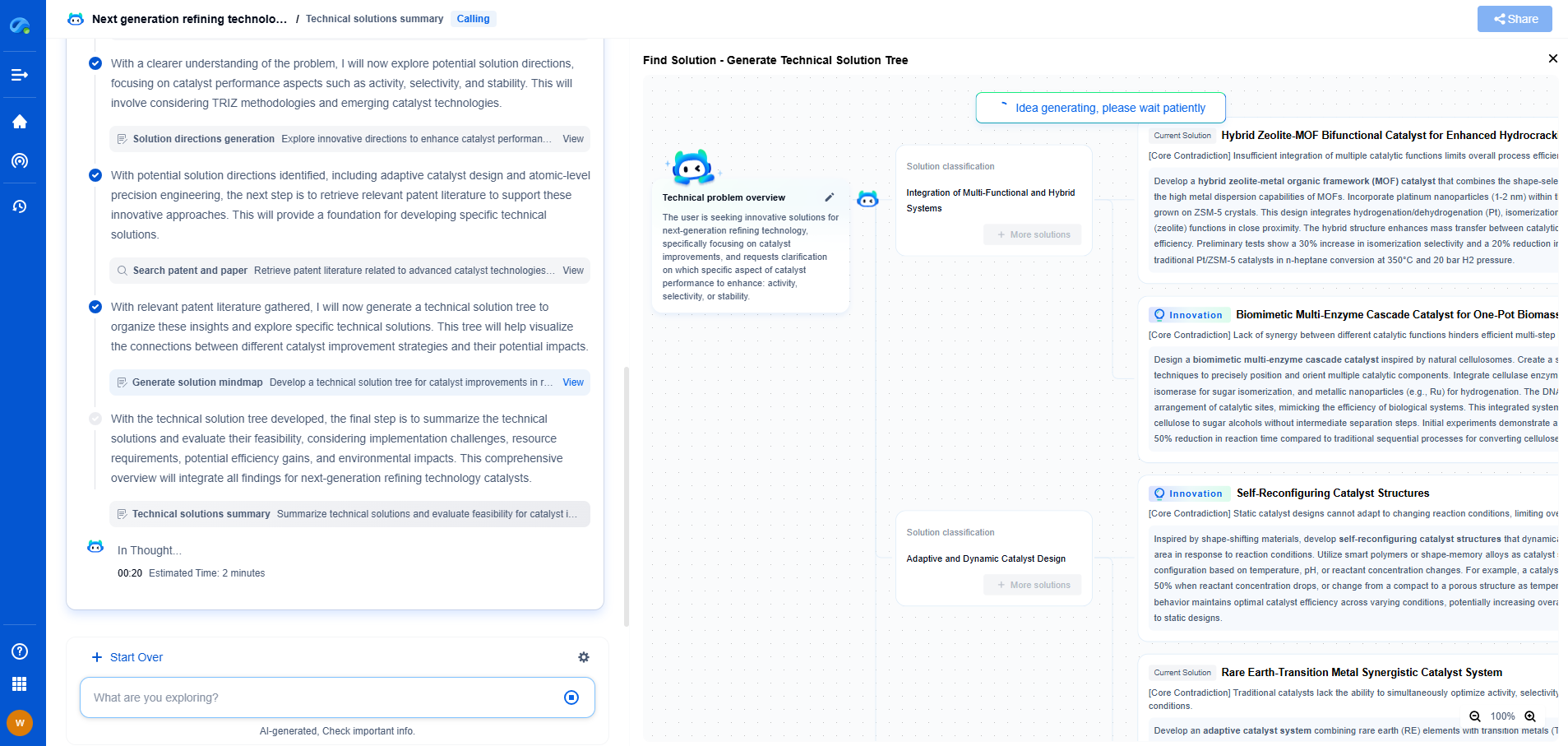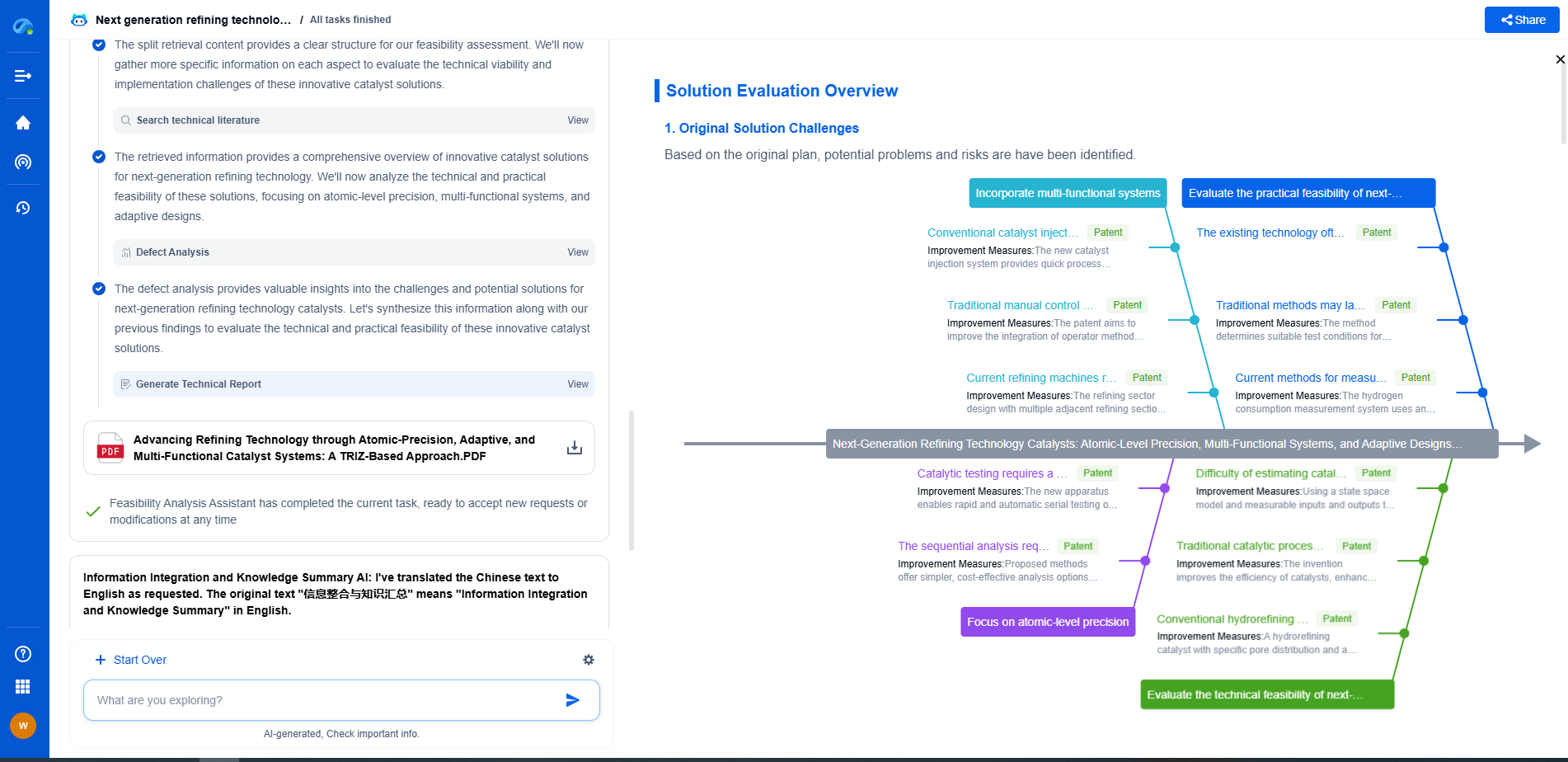Burst Disc Premature Failure: Material Fatigue Analysis
JUL 21, 2025 |
Burst discs, also known as rupture discs, are crucial safety devices in systems that require pressure regulation. They protect equipment from over-pressurization by providing a controlled path for the release of pressure when it exceeds a predetermined level. However, premature failure of burst discs can lead to catastrophic consequences, making it essential to understand the underlying causes. One significant factor contributing to premature failure is material fatigue. This blog delves into the concept of material fatigue and its impact on burst disc performance.
What is Material Fatigue?
Material fatigue refers to the weakening of a material due to repeated cyclic loading and unloading. Over time, this repeated stress can lead to the initiation and propagation of cracks, ultimately resulting in failure. Even if the stress levels are below the material's ultimate tensile strength, prolonged exposure can still cause fatigue failure. In the context of burst discs, material fatigue can occur when they are subjected to fluctuating pressures over extended periods.
Factors Contributing to Material Fatigue in Burst Discs
1. **Material Properties:** The choice of material is critical in determining the fatigue resistance of a burst disc. Metals such as stainless steel and nickel alloys are commonly used due to their durability and resistance to corrosion. However, each material has its fatigue limit, which can be affected by factors such as grain size, surface finish, and presence of impurities.
2. **Loading Conditions:** The nature of the pressure cycles that a burst disc experiences can significantly influence fatigue life. High-frequency pressure fluctuations, even at low amplitudes, can be more damaging than less frequent, high-amplitude cycles. Additionally, thermal cycling, which occurs in systems that experience temperature variations, can exacerbate material fatigue.
3. **Design and Manufacturing Defects:** Inadequate design or manufacturing defects, such as improper thickness, uneven surface, or residual stresses, can reduce the fatigue strength of a burst disc. Ensuring precision in the manufacturing process and adhering to design specifications are crucial in minimizing the risk of premature failure.
4. **Environmental Factors:** Exposure to corrosive environments can accelerate material fatigue. Corrosion can initiate cracks and weaken the material, making it more susceptible to fatigue failure. Protective coatings and regular maintenance can help mitigate these effects.
Detecting and Preventing Material Fatigue
Early detection of material fatigue can prevent catastrophic failures. Non-destructive testing methods, such as ultrasonic testing and radiography, can identify internal cracks before they propagate. Regular inspection and maintenance schedules are critical in identifying potential issues and replacing burst discs before failure occurs.
To enhance the fatigue resistance of burst discs, manufacturers can employ various strategies. These include selecting materials with higher fatigue limits, optimizing design to reduce stress concentrations, and ensuring high-quality manufacturing processes. Additionally, incorporating redundancy in safety systems can provide an added layer of protection against premature failure.
Conclusion
Material fatigue is a significant concern in the performance and longevity of burst discs. Understanding the factors that contribute to fatigue and implementing measures to mitigate its effects can enhance the reliability and safety of pressure systems. By selecting appropriate materials, optimizing design, ensuring quality manufacturing, and maintaining rigorous inspection protocols, the risk of premature burst disc failure due to material fatigue can be significantly reduced. Ultimately, prioritizing safety and reliability in burst disc applications is essential to safeguarding both equipment and human lives.
As clean energy and decarbonization drive new breakthroughs in hydrogen storage, CO₂ transport, and alternative gas carriers, keeping pace with technical trends and patent activity is critical to staying competitive.
Patsnap Eureka helps innovators in compressed gas storage, high-pressure tank design, gas sensor systems, and pipeline materials accelerate research by offering instant, AI-powered insights into global patents, related technologies, and emerging white spaces.
🚀 Bring speed, precision, and strategic foresight to your innovation and IP decision-making in the gas transport sector—try Eureka today and unlock a smarter path forward.
- R&D
- Intellectual Property
- Life Sciences
- Materials
- Tech Scout
- Unparalleled Data Quality
- Higher Quality Content
- 60% Fewer Hallucinations
Browse by: Latest US Patents, China's latest patents, Technical Efficacy Thesaurus, Application Domain, Technology Topic, Popular Technical Reports.
© 2025 PatSnap. All rights reserved.Legal|Privacy policy|Modern Slavery Act Transparency Statement|Sitemap|About US| Contact US: help@patsnap.com

